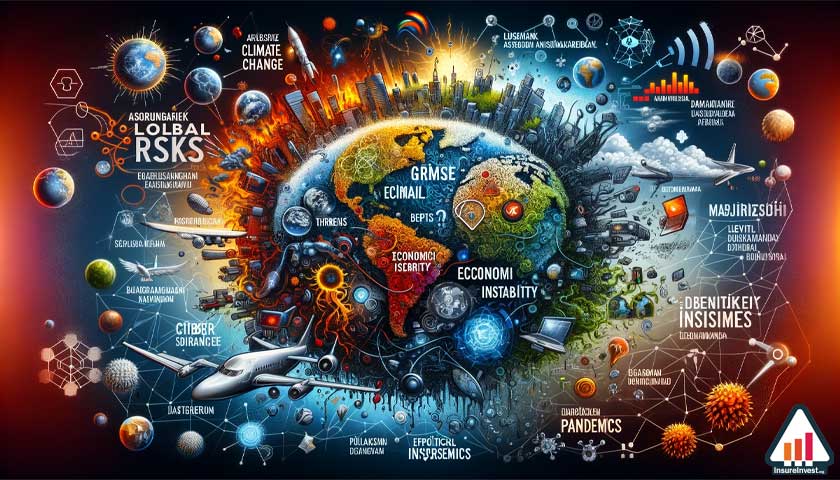A Comprehensive Exploration of Key Economic Terms
In the dynamic world of economics, various terms encapsulate the intricate facets of financial landscapes. This article aims to provide an in-depth analysis of pivotal economic phenomena, shedding light on the complex interplay of factors that define and shape economic conditions. From the detrimental effects of deflation to the nuances of dollarization, each term carries its own significance in the realm of global finance.
- Deflation:
Deflation refers to a sustained decrease in the general price level of goods and services within an economy. This phenomenon can lead to reduced consumer spending, lower production levels, and increased unemployment as businesses struggle with falling revenues. - Depression:
Depression is an extreme and prolonged economic downturn characterized by a severe contraction in economic activity, high unemployment rates, and a decline in consumer confidence. The Great Depression of the 1930s is a historical example that profoundly impacted the global economy. - Devaluation:
Devaluation occurs when a country intentionally reduces the value of its currency relative to other currencies. This strategy is often employed to boost exports by making domestic goods more affordable for foreign consumers. - Disinflation:
Disinflation refers to a slowdown in the rate of inflation, indicating that while prices are still rising, the rate of increase is declining. It is distinct from deflation, as the economy is not experiencing an absolute decrease in prices. - Dollarization:
Dollarization occurs when a country adopts a foreign currency, typically the U.S. dollar, as its official currency. This may happen due to a lack of confidence in the domestic currency or to achieve stability in the face of economic challenges. - Inflation:
Inflation is the general increase in prices of goods and services over time, leading to a decrease in the purchasing power of a currency. Moderate inflation is often considered a normal part of a healthy economy. - Hyperinflation:
Hyperinflation is an extreme form of inflation where prices skyrocket at an astronomical rate, leading to a rapid devaluation of the currency. This can result in social and economic instability, as witnessed in historical examples like Zimbabwe in the late 2000s. - Shrinkflation:
Shrinkflation refers to the practice of reducing the size or quantity of a product while keeping its price constant. This allows producers to maintain profit margins without raising prices visibly. - Skimpflation:
Skimpflation occurs when consumers receive less value for the same amount of money spent. This can manifest through reduced product quality, quantity, or features without a corresponding reduction in price. - Recession:
Recession is a significant decline in economic activity across the economy, typically characterized by a decrease in GDP, increased unemployment, and reduced consumer spending. Recessions are a natural part of the economic cycle. - Revaluation:
Revaluation is the deliberate increase in the value of a country’s currency, often to control inflation, improve international trade balances, or attract foreign investment. - Slumpflation:
Slumpflation is a term used to describe a situation where an economy experiences both economic slump (recession) and inflation simultaneously, presenting a challenging economic paradox. - Stagflation:
Stagflation is a rare economic condition characterized by stagnant economic growth, high unemployment, and inflation. This contradicts the traditional economic theory that suggests inflation and unemployment have an inverse relationship. - Stagnation:
Stagnation refers to a prolonged period of slow or no economic growth, often accompanied by high unemployment and limited investment. Stagnant economies face challenges in increasing productivity and fostering innovation.
Frequently Asked Questions
What is deflation, and how does it impact the economy?
- Deflation is a sustained decrease in the general price level of goods and services within an economy. It impacts the economy by reducing consumer spending, lowering production levels, and increasing unemployment as businesses struggle with falling revenues.
Can you explain the concept of depression in economics?
- Depression is an extreme and prolonged economic downturn characterized by a severe contraction in economic activity, high unemployment rates, and a decline in consumer confidence. The Great Depression of the 1930s serves as a historical example of such a phenomenon.
What does devaluation mean, and why do countries engage in it?
- Devaluation occurs when a country intentionally reduces the value of its currency relative to other currencies. Countries may engage in devaluation to boost exports by making domestic goods more affordable for foreign consumers.
How is disinflation different from deflation?
- Disinflation refers to a slowdown in the rate of inflation, indicating that prices are still rising, but the rate of increase is declining. Unlike deflation, where prices are decreasing, disinflation implies a moderation in the inflation rate.
What is dollarization, and why do countries adopt it?
- Dollarization is when a country adopts a foreign currency, usually the U.S. dollar, as its official currency. Countries may opt for dollarization to instill confidence in their currency or to achieve stability amid economic challenges.
Explain the concept of inflation and its effects on the economy.
- Inflation is the general increase in prices of goods and services over time, leading to a decrease in the purchasing power of a currency. While moderate inflation is considered normal for a healthy economy, excessive inflation can erode the value of money.
What is hyperinflation, and what are its consequences?
- Hyperinflation is an extreme form of inflation characterized by an astronomical increase in prices, leading to a rapid devaluation of the currency. Consequences include social and economic instability, as witnessed in historical examples like Zimbabwe in the late 2000s.
How does shrinkflation impact consumers and businesses?
- Shrinkflation involves reducing the size or quantity of a product while keeping its price constant. This practice impacts consumers by providing less value for the same amount of money and businesses by allowing them to maintain profit margins without raising prices visibly.
What is skimpflation, and how does it affect consumers?
- Skimpflation occurs when consumers receive less value for the same amount of money spent due to reduced product quality, quantity, or features without a corresponding reduction in price.
What are the characteristics of a recession, and how does it differ from a depression?
- A recession is a significant decline in economic activity characterized by decreased GDP, increased unemployment, and reduced consumer spending. It differs from a depression in terms of severity and duration.
Explain the concept of revaluation in economics.
- Revaluation is the deliberate increase in the value of a country’s currency, often done to control inflation, improve international trade balances, or attract foreign investment.
What is slumpflation, and how does it create economic challenges?
- Slumpflation describes a situation where an economy experiences both a recession (economic slump) and inflation simultaneously, presenting a challenging economic paradox with potential negative impacts.
Define stagflation and provide examples of historical instances.
- Stagflation is a rare economic condition characterized by stagnant economic growth, high unemployment, and inflation, contradicting the traditional economic theory. The 1970s oil crisis is a historical example of stagflation.
What does economic stagnation entail, and how does it affect a country’s development?
- Economic stagnation refers to a prolonged period of slow or no economic growth, often accompanied by high unemployment and limited investment. Stagnant economies face challenges in increasing productivity and fostering innovation, impacting long-term development.
Understanding these economic terms is crucial for policymakers, economists, and the general public alike. Economic conditions are ever-evolving, and a nuanced comprehension of these concepts empowers individuals to navigate the complex forces that shape the global financial landscape. As we continue to grapple with economic challenges, a comprehensive understanding of these terms provides a foundation for informed decision-making and proactive solutions.




The concept of revaluation caught my attention. It’s interesting to see how countries strategically adjust their currency values. This article provided a comprehensive overview, helping me grasp the complexities of economic policies on a global scale.
The discussion on stagflation was enlightening. It’s intriguing how economic conditions can defy conventional wisdom. The global nature of these terms emphasizes the interconnectedness of economies and the need for a holistic understanding.
Dollarization is a concept I’ve always found intriguing. The article provided a clear insight into why countries might adopt it. As someone in a neighboring country, it’s fascinating to see how economic decisions in one place can have ripple effects across borders.
Exploring these economic terms has been eye-opening! The detailed explanation of shrinkflation and skimpflation is particularly relevant in today’s consumer landscape. Understanding these terms helps me make more informed choices in a rapidly changing economy.